By Heidi Ware Carlisle, IBO Education and Outreach Director
As biologists, listening to bulldozer and dump truck engines rumble through the Diane Moore Nature Center in Fall 2021 was an exercise in trust: We’d worked to find a fantastic engineering firm—River Design Group—who had the experience needed to plan the side channel restoration project. We’d carefully selected our project team, and consulted with experts on this kind of restoration.
But still, it felt strange to watch as the side channel was carved through the dry soil where we knew the Boise River had once flowed.
We wondered how quickly the rich riparian habitat we were hoping for would begin to take root, and what it would be like. We had a lot to do!
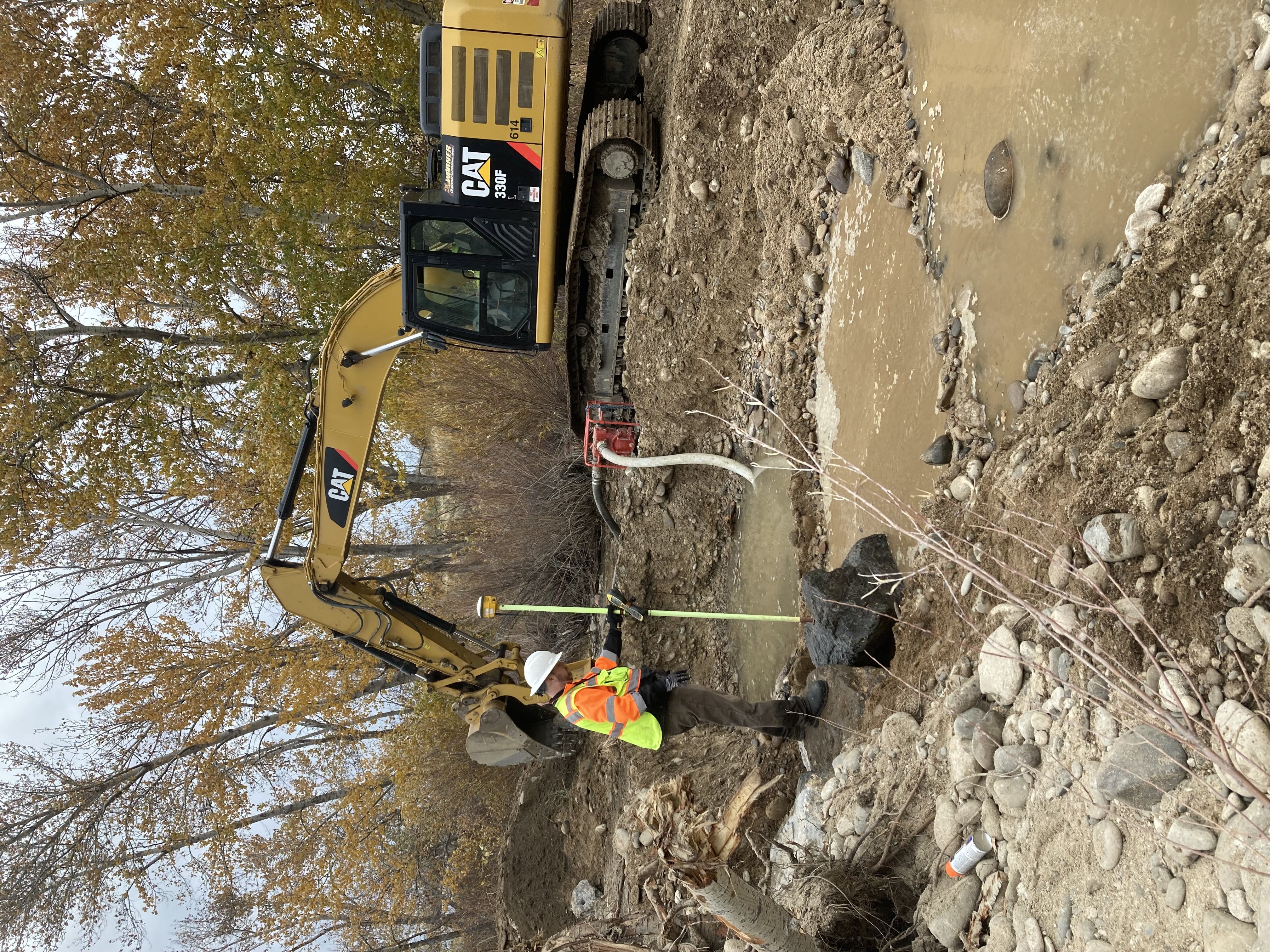
As soon as construction was complete we jumped to work restoring habitat with our teams of community volunteers, students, and partners like The Nature Conservancy and Boise Valley Fly Fishers. We planted thousands of native shrubs and willows, added spawning gravel to welcome trout, and wired cottonwood trees to slow down exuberant beavers.
When spring arrived we were amazed to watch as plants and wildlife started moving into the new habitat we created.
It was an explosion of biodiversity that happened much faster than we had predicted!
New sightings and updates came pouring in from seemingly everyone who visited the site. Greg and our student intern team spotted Rainbow Trout spawning in the side channel in April. They seemed to love the carefully engineered pools, gravel bars, and root wads we’d created!
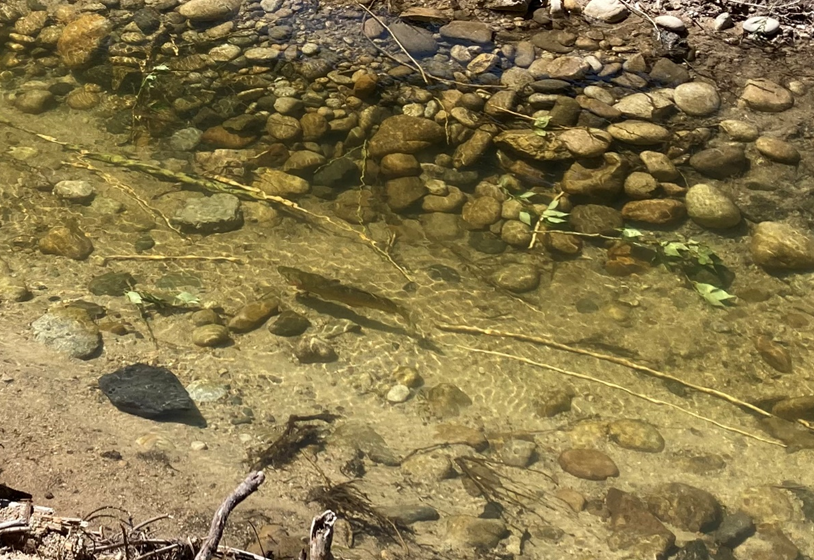
One day, our work study student Aaron spotted a pair of River Otters cruising down the channel!! A new species for the site, and one we hope sticks around.
Belted Kingfishers and Common Mergansers quickly learned where the best fishing pools were and visited daily to catch a quick meal. One male Kingfisher in particular immediately claimed the upper half of the side channel as his territory. He spent the whole year loudly defending that stretch against any intruders…we’ve never had such fierce kingfisher activity at our site.
So it’s safe to say the side channel project must have created some pretty desirable real estate for this species!
We spotted a mother Wood Duck with a brood of ducklings (probably hatched in one of the nest boxes built by Girl Scout Troop #186). And a hen Mallard and her family visited us during each of our summer songbird banding days, gobbling up insects and other invertebrates that congregated in the woody debris and log jams along the side channel.
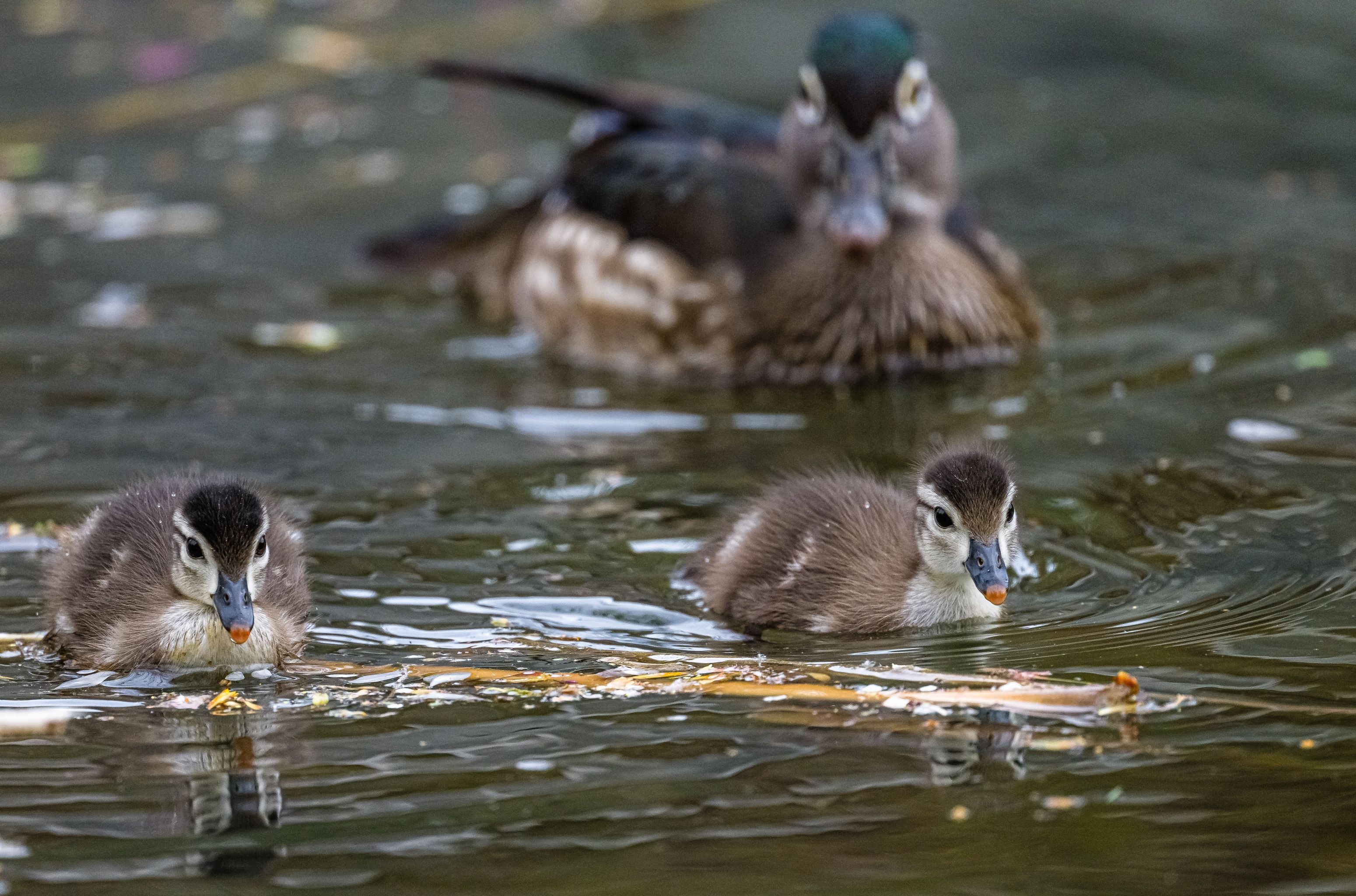
Boise State graduate student, Stephen Ritter, spent the summer surveying the side channel for these aquatic insects to better understand how species moved into the channel after restoration.
Hummingbirds and warblers spent time flycatching in the clouds of insects congregating over the channel.
The crew enjoyed watching newly emerged mayflies land on our arms as we studied and banded songbirds, and passing fly-fishers rejoiced to see such great hatches of “trout food”.
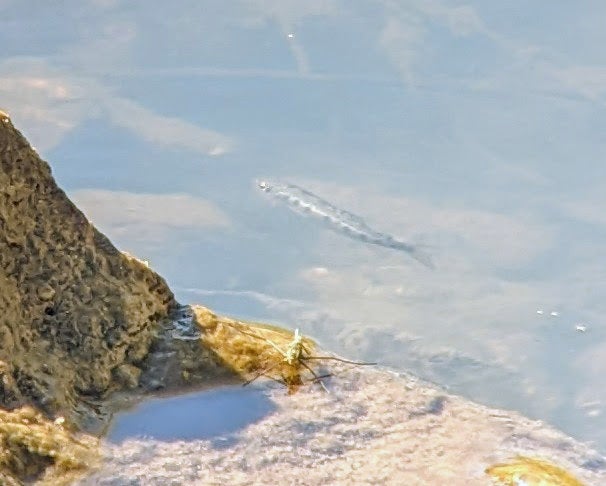
During visits to our station this fall, students exclaimed over the tiny speckled trout fry swimming among the logs in the channel. Many recalled stories from their 4th grade classroom of raising trout “just like these”! Kids clamored over rocks, finding Western Fence Lizards, Western Terrestrial Garter Snakes, and Sierran Tree Frogs.
They learned about much more than just birds during these class field trips!
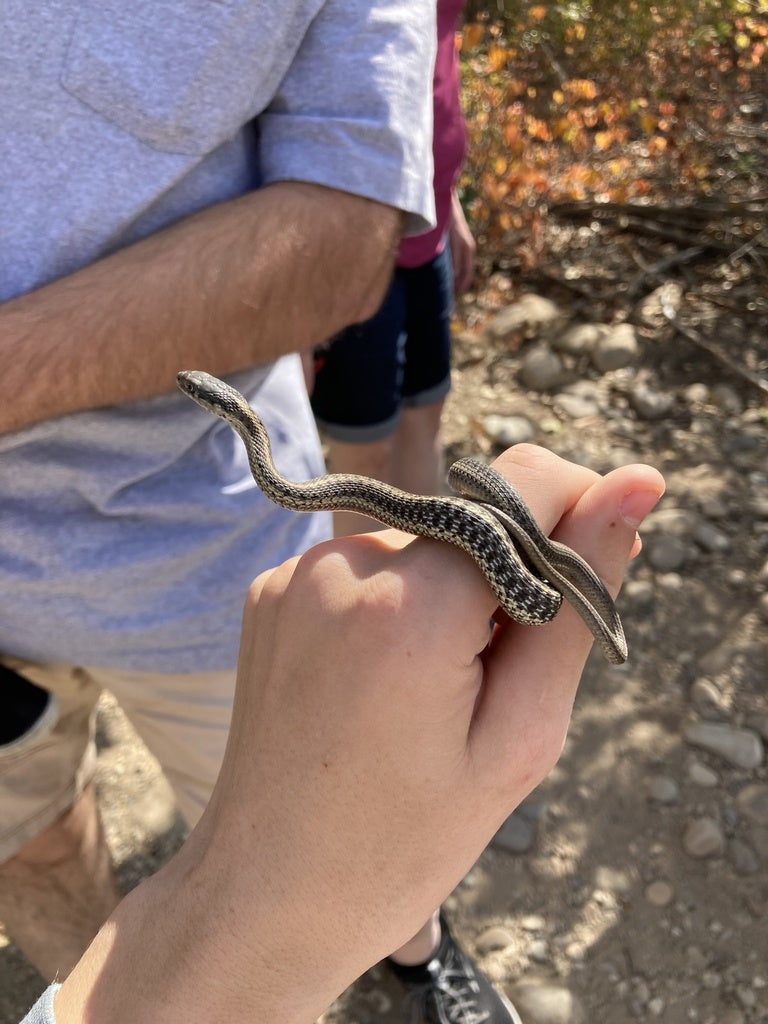
When Timberline High School Senior and long-time IBO volunteer, Arlo Thomas, wasn’t busy extracting birds from our nets or talking with visitors about our research he began carefully documenting the Signal Crayfish that were living in the channel.
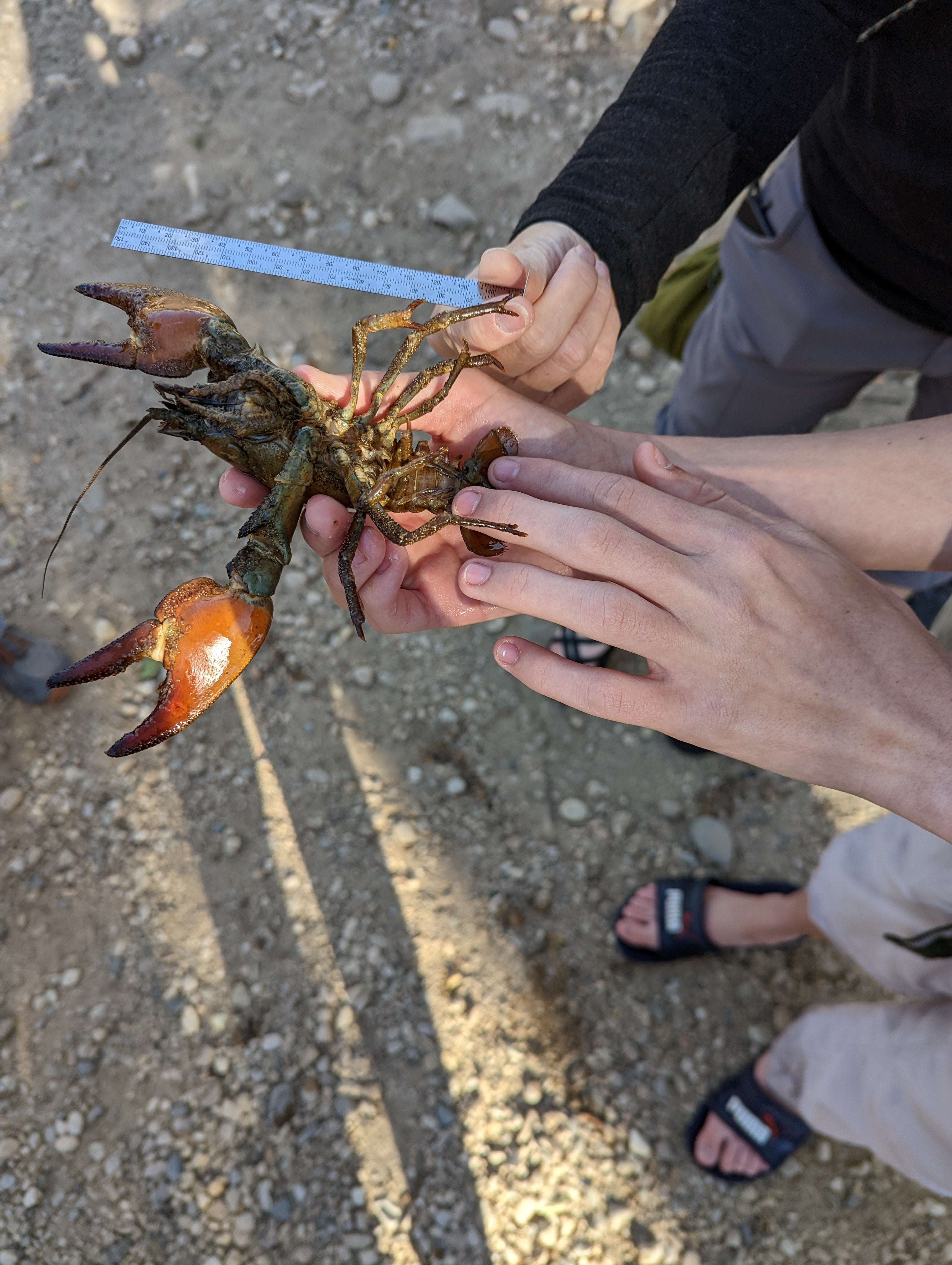
We were stunned by the number of individuals we found. And even more impressed by the size of some of the specimens. One day we banded a male Sharp-shinned Hawk that was dwarfed by a crayfish Arlo caught and we were absolutely amazed…
…the crayfish weighed 20 grams MORE than the hawk!
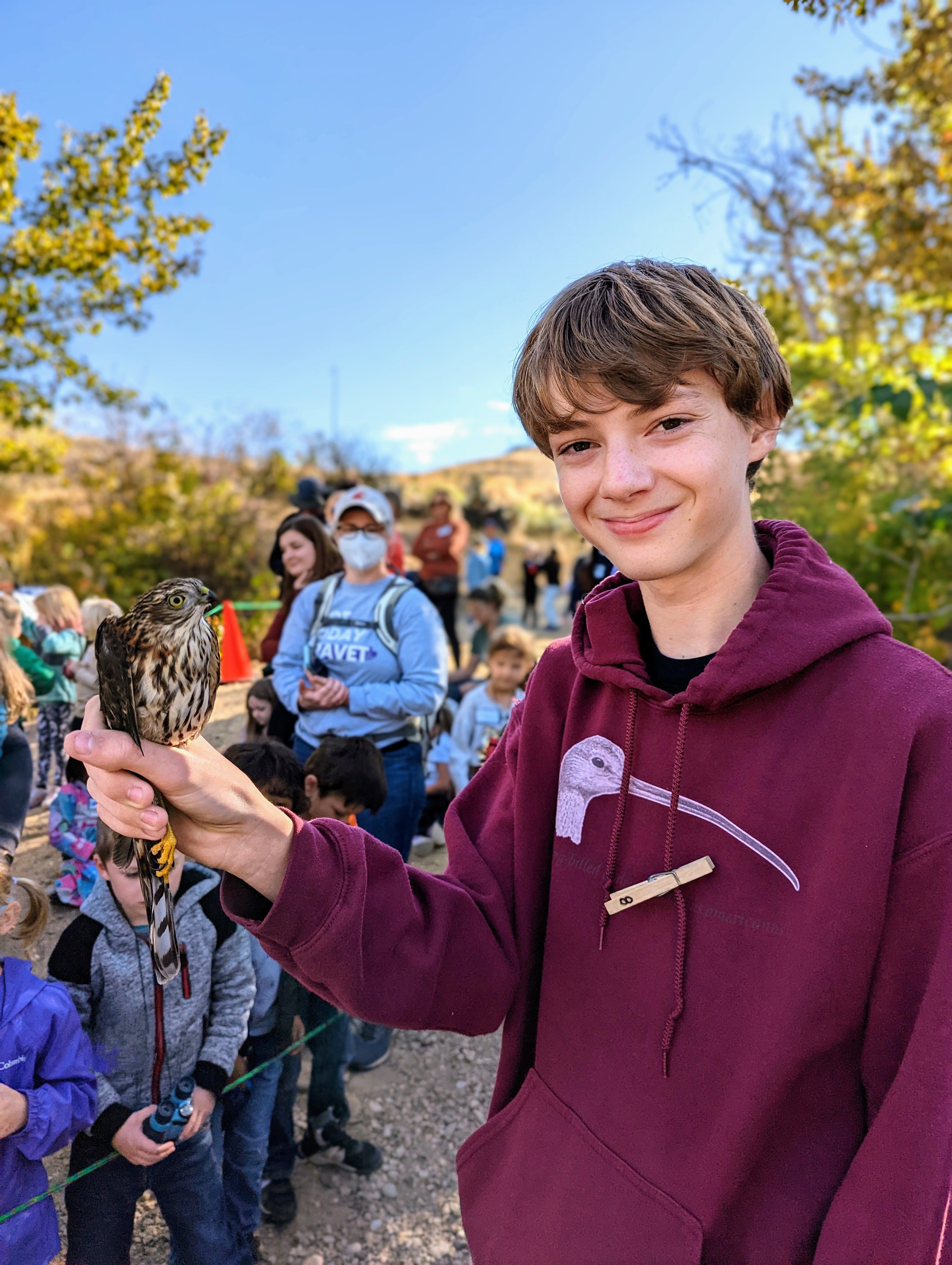
Though we’ve been doing habitat restoration at the Diane Moore Nature Center since 2018- adding about 2,000 native plants each fall- this year really took the cake!
It was a joy to watch the changes take place after the side channel was installed.
We knew about the value of side-channel construction “on paper”, and had written numerous proposals about the benefits of this kind of restoration. But, it was still amazing to see it happen in real life. We can’t wait to see what future seasons have in store as the habitat around the channel continues to improve!
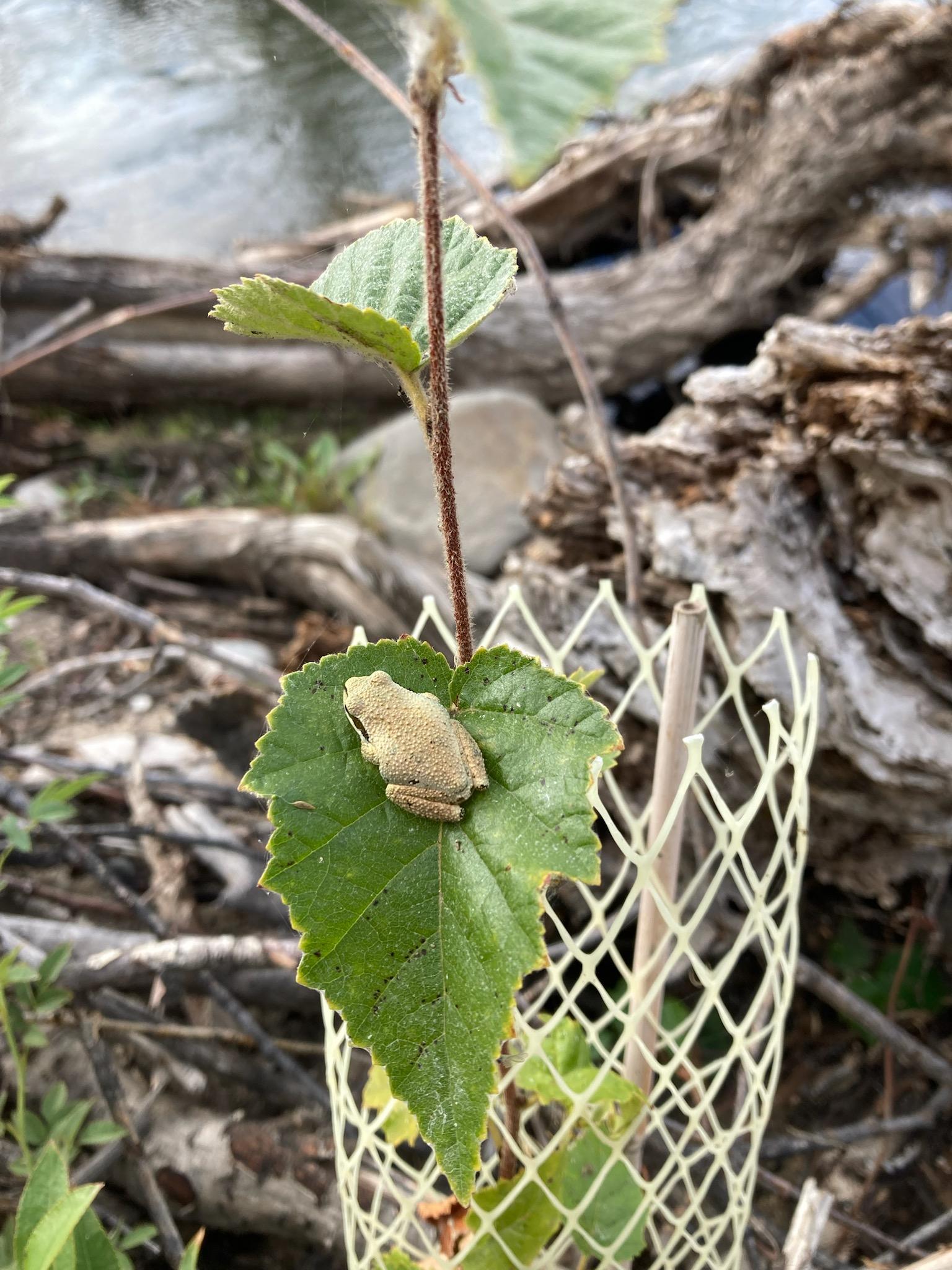
This spring it will be all hands on deck at the Diane Moore Nature Center. If you’d like to help us plant shrubs or work on other habitat restoration projects at the site, sign up for updates using our volunteer form.
This article is part of our 2022 end of the year newsletter! View the full newsletter here, or click “older posts” to read the next article.
Make sure you don’t miss out on IBO news! Sign up to get our email updates.
